
Putting It All Together

There she sits, our brand new Bell 429 helicopter. I don’t know when or how it all started, but since my days in the U.S. Navy working on and flying in aircraft, we always referred to an aircraft as a she. I wonder what it took to get her here. I know what I will have to do as far as working on her, but I get to see her as a complete and finished helicopter. How did she start out in the build sequence?
To answer that question, I first spoke with Francois Magnan, manager of intermediate and medium helicopter product support engineering at Bell Helicopter Textron, Montreal. Magnan is on HAI’s technical committee with me and I thought that would be a logical place to start with my question. Magnan put me in touch with Brian Bianco, communications manager for engineering at Bell Helicopter Textron, Fort Worth, TX, and we were on our way.
Background
Before we go too far, we all know about the Wright brothers’ first flight in 1903, but when was the first time anything was recorded that even remotely hinted at today’s modern helicopter? The earliest references for vertical flight came from China. Since around 400 B.C., Chinese children have played with bamboo flying toys. The fourth-century A.D. Daoist book Baopuzi(“Master who Embraces Simplicity”) reportedly describes some of the ideas inherent to rotary-wing aircraft.
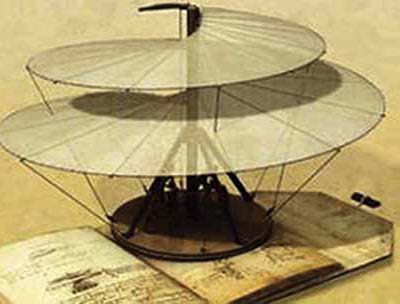 History also tells us that around the early 1480s, Leonardo da Vinci created a design for a machine that could be described as an “aerial screw.” His notes suggested that he built small flying models, but there were no indications for any provision to stop the rotor from making the craft rotate. As scientific knowledge increased, the idea of vertical flight continued to be pursued. Several models were built and tested, and many of these later models and machines would closely resemble the ancient Chinese bamboo flying top with spinning wings rather than Da Vinci’s screw.
History also tells us that around the early 1480s, Leonardo da Vinci created a design for a machine that could be described as an “aerial screw.” His notes suggested that he built small flying models, but there were no indications for any provision to stop the rotor from making the craft rotate. As scientific knowledge increased, the idea of vertical flight continued to be pursued. Several models were built and tested, and many of these later models and machines would closely resemble the ancient Chinese bamboo flying top with spinning wings rather than Da Vinci’s screw.
Hélicoptère
The word helicopter is adapted from the French hélicoptère, coined by Gustave de Ponton d’Amecourt in 1861, which originates from the Greek helix/helik- (ελιξ) = “twisted, curved” and pteron (πτερÓν) = “wing.” While celebrated as an innovative use of a new metal, aluminum, the model never lifted off the ground. D’Amecourt’s linguistic contribution would survive to eventually describe the vertical flight he had envisioned. Steam power was popular with other inventors as well. In 1878, Italian Enrico Forlanini’s unmanned vehicle was also powered by a steam engine and was the first of its type that rose to a height of 40 feet, where it hovered for some 20 seconds after a vertical take off. Emmanuel Dieuaide’s steam-powered design featured counter-rotating rotors powered through a hose from a boiler on the ground.
The Birth of an Industry
Heinrich Focke at Focke-Wulf had been licensed to produce the Cierva C.30 autogyro. From this, Focke was inspired to design the world’s first practical helicopter, the Focke-Wulf Fw 61, which first flew on June 26, 1936. The Fw 61 broke all of the helicopter world records in 1937, demonstrating a flight envelope that had only previously been achieved by the autogyro.
Meanwhile in the United States, Russian-born engineer Igor Sikorsky and W. Lawrence LePage were competing to produce the U.S. military’s first helicopter. Prior to World War II, LePage had received the patent rights to develop helicopters patterned after the Fw 61, and he built the XR-1. Sikorsky had settled on a simpler, single-rotor design, the VS-300, which turned out to be the first practical single lifting-rotor helicopter design, and the best-flying one since the Soviet TsAGI 1-EA flown nearly a decade before. After experimenting with configurations to counteract the torque produced by the single main rotor, Sikorsky settled on a single, smaller rotor mounted on the tailboom.
As LePage and Sikorsky were building their helicopters for the military, Bell Aircraft hired Arthur Young to help build a helicopter using Young’s two-blade teetering rotor design, which used a weighted stabilizing bar placed at a 90-degree angle to the rotor blades. The subsequent Model 30 helicopter showed the design’s simplicity and ease of use. The Model 30 was developed into the Bell 47, which became the first helicopter certificated for civilian use in the U.S. Produced in several countries, the Bell 47 would stand as the most popular helicopter model for nearly 30 years … and what followed is history. This brings us back to how the B429 was assembled.
HeliMx– From start to finish, how long does it take to assemble the Bell model 429 Helicopter?
Bell – It takes approximately 40 days to complete a basic aircraft. This does not include time spent to fit customer options such as Bell kits and special customizing.
HeliMx – What are some of the lessons learned over time that have helped Bell Helicopter reduce the time required to build the 429 helicopter?
Bell– One of the objectives whenever Bell Helicopter designs an aircraft is to reduce the time required to assemble a complete airframe. For example, to achieve this with the Bell 429, we divided the airframe into modules that allow for a better process flow during assembly. Furthermore, the aircraft are designed with ergonomics in mind. In the early stages of the floor assembly of the Bell 429, the fuel system is fitted on a fixture which allows the workers to stand up, therefore avoiding uncomfortable postures and reducing work-related injuries.
HeliMx– Are any “exotic” materials used in the aircraft build and do they pose any challenges in assembling the aircraft? For example, the use of carbon fiber or Kevlar could pose a grounding problem for antennas.
Bell – The Bell 429 uses composite materials extensively, namely carbon fiber. Titanium and aluminum alloys are also used for structural and dynamic components. The use of composites does pose certain challenges when it comes to electrical bonding. To resolve this issue, a layer of copper mesh is bonded on each composite panel to assure continuity throughout the helicopter.

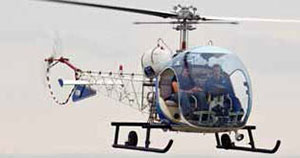
HeliMx– Without getting into the engineering aspects, can you tell us the thought process on why certain equipments are mounted where they are? This again is questioned from a maintenance viewpoint.
Bell – There are many things to be considered when mounting equipment such as antennas and various systems for items such as cameras or search lights. Factors such as aerodynamics, stress loads, electro-magnetic interference vibrations and center of gravity are all taken under consideration when selecting a suitable mounting area on the aircraft. The final deciding factor is always the flight test to validate the handling qualities of the helicopter.
HeliMx – From start to finish, what is the build sequence for the 429 helicopter?
Bell – The Bell 429 airframe is divided into four modules: the nose assembly, the cabin, the aft fuselage and the tailboom assembly.
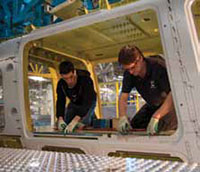
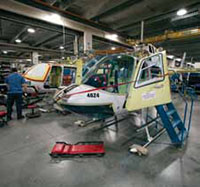
Production starts with the assembly of the cabin, which includes the floor assembly, roof assembly and sidebodies. Once the cabin is complete, the nose assembly and aft fuselage are mated to form the fuselage assembly. The fuselage assembly is then moved to the final assembly line where the firewalls, engine, transmission, hydraulics, electrical and avionics, rotor hub, tailboom assembly and doors are fitted. Functional tests and rigging of all systems are carried out before the helicopter is transferred to the pre-flight hangar.
Once in pre-flight, the aircraft undergoes a water tightness test. Then the fuel quantity sytem is calibrated, the rotor blades are fitted on the helicopter and various adjustments such as the weight on gear switch are verified.
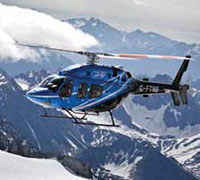
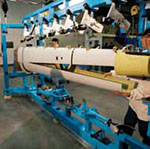
Before performing ground runs, the vibration monitoring equipment is installed on the aircraft. The helicopter is then attached to the ground to carry out simulated flights at maximum power. During the ground run, the technicians monitor aircraft systems, oil and air lines for leaks, and carry out the primary adjustments for the main and tail rotors. Once the ground run is complete, the aircraft is brought back inside for defect rectification, aircraft inspection and cowling installation. Once the aircraft is approved by quality assurance, the aircraft is released for flight.
During flight testing, final rotor adjustments are carried out and all systems are verified by the pilot to ensure that the aircraft meets the performance specifications. Once flight testing is completed, the aircraft is reinspected and all discrepancies are rectified. Some additional adjustments are made and all retorques are carried out. The aircraft is then reflown to ensure that all the discrepancies and adjustments have been handled to satisfaction.
Finally, the aircraft is presented to the Transport Canada delegate for inspection and issuance of its certificate of airworthiness. Now we know f how the Bell 429 helicopter is assembled, from start to finish.
My thanks to Brian Bianco for his help with this article. My additional thanks to Sebastien Rousseau and Paul Mayrand, product support engineers at Bell Helicopter in Mirabel, Quebec, Canada, for their invaluable assistance as well.
